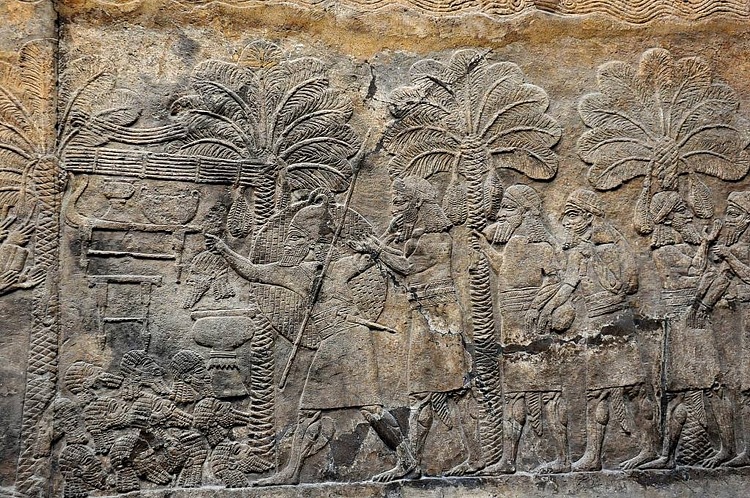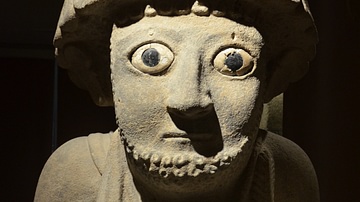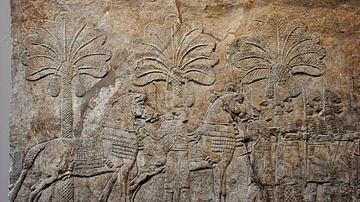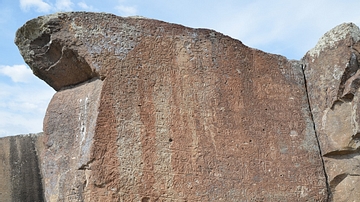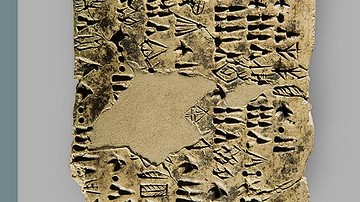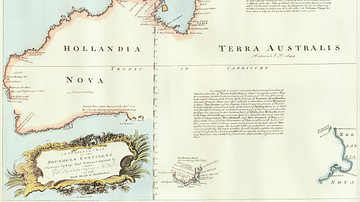Illustration
This wall panel was part of a large alabaster wall relief. The Assyrian king in a chariot (who is noy shown) watches as prisoners are brought in, and heads and booty are piled-up in a palm grove. In Assyrian literature, beheaded bodies refer to the leaders of the enemy (king, prince, commander-in-chief, leader of insurgency), while solders and people would be considered as prisoners of war. Neo-Assyrian period, 640-620 BCE, Mesopotamia, Iraq. From Nineveh, south-west palace, court XIX, panels 10-12. (The British Museum, London).
About the Author
Cite This Work
APA Style
Amin, O. S. M. (2014, September 18). Assyrian Military Campaign in Southern Iraq. World History Encyclopedia. Retrieved from https://www.worldhistory.org/image/3041/assyrian-military-campaign-in-southern-iraq/
Chicago Style
Amin, Osama Shukir Muhammed. "Assyrian Military Campaign in Southern Iraq." World History Encyclopedia. Last modified September 18, 2014. https://www.worldhistory.org/image/3041/assyrian-military-campaign-in-southern-iraq/.
MLA Style
Amin, Osama Shukir Muhammed. "Assyrian Military Campaign in Southern Iraq." World History Encyclopedia. World History Encyclopedia, 18 Sep 2014. Web. 23 Oct 2024.

